A chiropractic adjustment - also known as chiropractic manipulation, manual manipulation, or spinal manipulation - is a common therapeutic treatment for lower back pain. A chiropractic adjustment refers to a chiropractor applying manipulation to the vertebrae that have abnormal movement patterns or fail to function normally.
The objective of this chiropractic treatment is to reduce the subluxation, with the goals of increasing range of motion, reducing nerve irritability and improving function.
Chiropractic Adjustment Description
A chiropractic adjustment typically involves:
- A high velocity, short lever arm thrust applied to a vertebra or a peripheral joint
- An accompanying, audible release of gas or 'popping/cracking' sound (joint cavitation) that is caused by the release of oxygen, nitrogen, and carbon dioxide, which releases joint pressure (cavitation)
- A relieving sensation most of the time, although minor discomfort has been reported (that usually lasts for a short time duration) if the surrounding muscles are in spasm or the patient tenses up during this chiropractic care.
It should be known that joint ‘cavitation or cracking’ does not occur at times, typically as a result of significant muscle splinting or the patient not being adequately relaxed during the chiropractic manipulation. At times like this, it is sometimes best for the chiropractor to apply ice, have the patient rest, or do electrical stimulation and massage prior to attempting the chiropractic adjustment.
Chiropractic Adjustment Techniques
There are many different manipulative techniques that can be utilized in chiropractic, and there is a certain skill level and "art" involved with high velocity, low amplitude adjustment or manipulation. It is perhaps more important for the chiropractor to determine when not to apply the adjustment.
Chiropractic Adjustment Side Effects
The most common reaction to a chiropractic adjustment is aching or soreness in the spinal joints or muscles. If this aching or soreness occurs, it is usually within the first few hours post-treatment and does not last longer than 24 hours after the chiropractic adjustment. Application of an ice pack often reduces the symptoms relatively quickly.
References:
- The American Chiropractic Association: Facts & Statistics about Chiropractic.
- Unsworth A, Dowson D, Wright V. "Cracking joints".
- Dr. Steven G. Yeomans, DC
There are well over 100 types of adjustment techniques used by chiropractors throughout the world. Typically, chiropractors will focus on and utilize 8 to 10 different approaches in their practice.
The common goal of most chiropractic techniques is to restore or to enhance joint function, with the general goals of resolving joint inflammation and reducing pain. Some approaches use some force (spinal manipulation), while others are more gentle (spinal mobilization).
The original chiropractic adjustment approach is generally referred to as spinal manipulation, and may also be called the diversified technique or the high-velocity, low-amplitude (HVLA) thrust. New chiropractic adjustment approaches typically evolve as a variation from an existing technique and are often named after the chiropractor who developed it.
This article reviews a number of the most commonly used spinal manipulation and spinal mobilization techniques currently used by chiropractors.
Chiropractic Manipulation Techniques
Chiropractors adapt treatment plans to meet the specific needs of each patient. Typically, chiropractic treatment plans involve some forceful and less forceful spinal adjustment techniques during the same visit or over the course of treatment (6 to 10 visits for a typical patient).
- Spinal Manipulation (High-Velocity Low-Amplitude Thrust): The most frequently used chiropractic technique, spinal manipulation, is the traditional high-velocity low-amplitude (HVLA) thrust. The manipulation often results in an audible "pop," as chiropractors use their hands to apply a controlled sudden force to a joint while the body is positioned in a specific way.
- Spinal Mobilization (Low-Force or Gentle Chiropractic Techniques): Some conditions (such as osteoporosis), pathology, the patient's size, patient comfort, or patient preference, may require a gentler approach generally referred to as spinal mobilization. In addition, some patients and/or clinicians prefer mild spinal mobilization techniques that do not involve twisting of the body or a forceful thrust.
In addition to manipulation, many chiropractors will employ adjunctive therapy, such as ice or heat or physical therapy modalities (such as electric stimulation, ultrasound, etc.), as part of an overall treatment plan. Patients should discuss their symptoms and preferences with their chiropractor, whose role it is to perform a thorough examination to determine the best course of treatment.
Chiropractors are not the only health care providers who utilize spinal manipulation for back pain treatment. Many osteopathic physicians will provide a variety of types of spinal adjustments, such as the spinal manipulation and mobilization described in this article. Occasionally, other types of health care professionals, such as physical therapists or physiatrists, will be trained in providing spinal manipulation as well.

